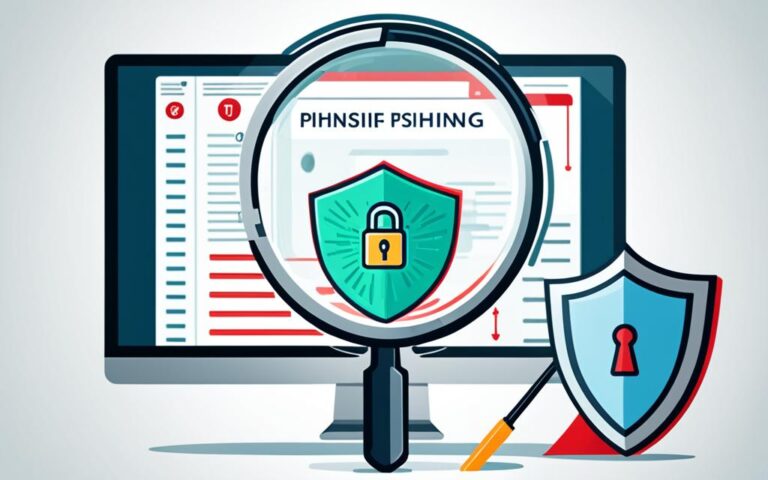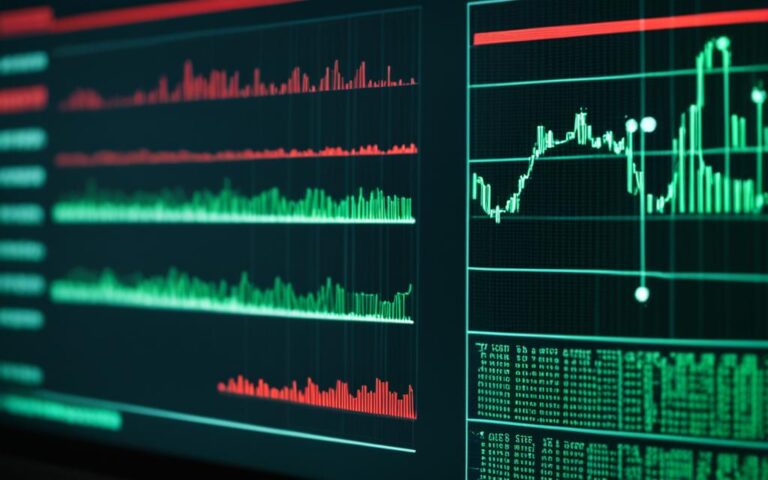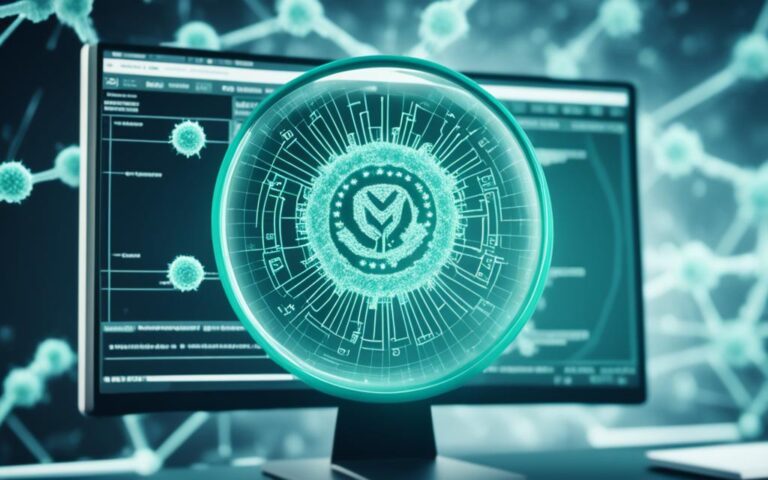The Future of Cybersecurity Cleanup Technologies
Cybersecurity is an ever-evolving field, with constant advancements and emerging trends shaping the way organizations protect their digital assets. As cyber threats become more frequent and sophisticated, the need for robust cybersecurity technologies is paramount. In this article, we will explore the future of cybersecurity cleanup technologies and the trends that will shape the industry.
Ransomware attacks have made headlines with high-profile incidents targeting renowned organizations such as MGM Resorts International and Caesars Entertainment. These attacks highlight the urgent need for cybersecurity advancements to combat evolving threats. As cybercriminals become more adept, cybersecurity tools must continuously evolve to protect sensitive data and infrastructure.
One persistent threat that organizations face is social engineering attacks. These attacks exploit human errors and manipulate individuals into revealing sensitive information. With the increasing use of artificial intelligence (AI) technologies, social engineering attacks have become more sophisticated, making it crucial for organizations to educate their employees and implement proactive measures.
The cybersecurity workforce gap continues to grow, leaving organizations struggling to find skilled professionals to tackle evolving threats effectively. As a result, many companies are turning to managed security service providers, outsourcing their cybersecurity responsibilities to ensure comprehensive protection without the burden of building an in-house team.
Prevention and preparedness are vital in the fight against cyber threats. With the introduction of new regulations and frameworks, organizations need to prioritize compliance and align their cybersecurity programs accordingly. Additionally, cyber insurance assessments have gained importance, driving organizations to undergo assessments that evaluate risk and provide recommendations for enhanced cybersecurity resilience.
Cloud-based services have become a growing target for cyberattacks. As organizations increasingly rely on the cloud for data storage and operations, it is crucial to understand the shared responsibility model between cloud service providers and users. By understanding their responsibilities and addressing potential vulnerabilities, organizations can better protect their assets in the digital landscape.
Automation is set to play a pivotal role in the future of cybersecurity cleanup technologies. By embracing automation, organizations can enhance their threat detection capabilities, reduce response time, and improve overall security posture. Investing in future tech solutions and embracing automation will be key to staying ahead of cyber threats and ensuring resilience in an increasingly digital world.
In the following sections, we will delve deeper into the different aspects of cybersecurity cleanup technologies, exploring the challenges, trends, and best practices that organizations need to consider in their cybersecurity strategies.
Ransomware and Cybersecurity Risks
Ransomware attacks have seen a concerning increase in frequency, sophistication, and impact, posing significant cybersecurity risks for organizations. Notably, in 2023, MGM Resorts International and Caesars Entertainment fell victim to highly targeted and damaging ransomware attacks, underscoring the severity of the threat. Cybercriminals deliberately target organizations with substantial financial assets, exploiting vulnerabilities such as social engineering attacks to gain unauthorized access to sensitive data and systems.
This surge in ransomware attacks highlights the critical need for robust cybersecurity practices to mitigate the risks posed by cybercriminals. Organizations must prioritize proactive measures to prevent, detect, and respond effectively to ransomware incidents. The consequences of a successful ransomware attack can be devastating, resulting in financial loss, reputational damage, and operational disruption.
“The breach of these networks highlights the importance of cybersecurity practices and the need to address the risk of ransomware attacks.”
The Rising Threat of Ransomware Attacks
Ransomware attacks have evolved from relatively simple tactics to highly targeted and sophisticated campaigns. Cybercriminals employ various techniques and vectors to deliver ransomware payloads, including malicious emails, drive-by downloads, and exploiting vulnerabilities in software and systems.
- Social Engineering: Cybercriminals exploit human vulnerabilities through social engineering attacks, tricking individuals into divulging sensitive information or inadvertently executing malicious code. Phishing emails, pretexting, and baiting techniques are commonly deployed to gain unauthorized access.
- Double Extortion: In a worrying trend, cybercriminals are adopting “double extortion” tactics, where they not only encrypt victims’ data but also threaten to publicly release the stolen information, intensifying the pressure to pay the ransom.
- Ransomware-as-a-Service (RaaS): The emergence of RaaS platforms has democratized ransomware attacks, allowing even less technically skilled cybercriminals to participate. RaaS models provide a user-friendly interface, step-by-step guides, and support, enabling a wider range of threat actors to engage in these malicious activities.
The Urgency of Cybersecurity Measures
Addressing the escalating cybersecurity risks posed by ransomware requires a multi-faceted approach. Organizations must implement a combination of preventive and detective controls, along with robust incident response plans, to minimize the impact of ransomware attacks.
It is essential to proactively assess and strengthen defense mechanisms, identify vulnerabilities, and develop comprehensive cybersecurity strategies to safeguard digital assets.
Employee cybersecurity awareness and training play a crucial role in combating ransomware attacks. Organizations must educate their employees about cybersecurity best practices, including identifying and reporting phishing attempts, practicing safe browsing habits, and regularly updating software and systems to address known vulnerabilities.
Regular backups of critical data and systems are paramount to facilitate recovery in the event of a successful ransomware attack. Implementing a robust backup and recovery strategy ensures that organizations maintain access to crucial data and can restore operations quickly, reducing the dependence on paying ransoms.
In the next section, we will explore the persistent threat of social engineering in cybersecurity.
Social Engineering as a Persistent Threat
Social engineering attacks persist as a prominent cybersecurity threat, despite advancements in security solutions. Human error remains a challenge in combatting such attacks, making organizations vulnerable to exploitation. Malicious actors are increasingly leveraging artificial intelligence technologies to craft sophisticated messages with the aim of deceiving victims into clicking on malicious links. These attacks often employ phishing techniques to trick users into divulging sensitive information.
It is crucial for organizations to educate their employees about the risks associated with social engineering and implement proactive measures to prevent such attacks. Training programs should focus on raising awareness of common phishing tactics, promoting cautious online behavior, and reinforcing the importance of verifying the authenticity of communication before divulging sensitive information.
By investing in cybersecurity awareness programs and implementing robust technical controls, organizations can significantly mitigate the impact of social engineering attacks. Employee vigilance, combined with cutting-edge technology, can help thwart various forms of social engineering, safeguard organizational assets, and protect sensitive data from falling into the wrong hands.
Remember, vigilant employees are the first line of defense against social engineering attacks.
Types of Social Engineering Attacks
Social engineers employ several tactics to exploit human vulnerabilities and gain unauthorized access to systems and sensitive information. Common social engineering attacks include:
- Phishing emails: Unsolicited emails disguised as legitimate communications to trick recipients into revealing sensitive information or downloading malicious attachments.
- Pretexting: Fabricating a fictional scenario to manipulate individuals into sharing confidential data or granting unauthorized access.
- Baiting: Leaving physical or digital “bait” (such as infected USB drives or enticing downloads) for unsuspecting victims to engage with, compromising their devices or systems.
- Quid pro quo: Promising a benefit or reward in exchange for sensitive information or access credentials.
- Tailgating: Gaining unauthorized physical access to a restricted area by closely following an authorized individual without detection.
Remain cautious and skeptical when engaging with unfamiliar or unexpected requests for sensitive information, both online and offline.
Tackling Social Engineering Attacks: Best Practices
Protecting against social engineering attacks requires a multi-faceted approach that combines technical measures with human awareness and vigilance. Here are some best practices to consider:
- Provide comprehensive cybersecurity training: Educate employees about social engineering tactics, raise awareness of potential threats, and emphasize the importance of reporting suspicious activities.
- Implement two-factor authentication (2FA): Enable 2FA on systems and accounts to add an extra layer of security, making it more difficult for attackers to gain unauthorized access.
- Regularly update and patch systems: Stay up-to-date with the latest security patches to address known vulnerabilities that could be exploited by social engineers.
- Conduct regular phishing simulations: Test and reinforce employees’ ability to spot and report phishing emails by conducting simulated phishing campaigns.
- Establish incident response protocols: Develop a clear and well-defined incident response plan to minimize the impact of social engineering attacks and facilitate swift remediation.
By adopting a holistic approach and fostering a cybersecurity-conscious culture, organizations can effectively combat social engineering attacks and reduce the risk of falling victim to these deceptive tactics.
The Cybersecurity Workforce Gap and Managed Security Providers
In today’s rapidly evolving threat landscape, organizations are facing a significant challenge in finding skilled professionals to fill the cybersecurity workforce gap. The shortage of talent in this field has far-reaching implications and has led to burnout among existing cybersecurity professionals.
To address this skills shortage and ensure the protection of their sensitive data and assets, many organizations are turning to managed security service providers. These providers offer a range of cybersecurity services, including threat detection and response, network monitoring, and vulnerability assessments.
Outsourcing cybersecurity responsibilities to managed security providers brings numerous benefits. First and foremost, it alleviates the burden on in-house teams and allows organizations to focus on their core competencies. By partnering with experts in the field, businesses can access a wealth of technical knowledge and experience without the need for extensive recruitment.
Furthermore, managed security providers offer scalability and flexibility, allowing organizations to adjust their cybersecurity measures based on evolving threats and business needs. They can augment existing security teams or even act as a fully outsourced security department, providing round-the-clock protection.
The Advantages of Managed Security Providers
Managed security providers offer a range of advantages that make them an attractive choice for organizations seeking to bridge the cybersecurity workforce gap:
- Access to specialized expertise: Managed security providers have teams of dedicated professionals with expertise in various fields of cybersecurity, such as threat intelligence, incident response, and security architecture.
- Advanced threat detection and response capabilities: These providers employ advanced technologies and techniques to detect and respond to emerging threats in real-time, minimizing the impact of potential breaches.
- 24/7 monitoring and support: Managed security providers offer continuous monitoring of networks and systems, ensuring that any security incidents are promptly identified and mitigated.
- Scalability and flexibility: Organizations can easily adjust their cybersecurity capabilities to meet changing needs, whether it’s scaling up during peak periods or downsizing during quieter times.
By partnering with managed security providers, organizations can bridge the cybersecurity workforce gap and ensure the ongoing protection of their critical assets. These providers bring the necessary expertise, resources, and round-the-clock vigilance to combat the ever-evolving threat landscape.
Prevention, Preparedness, and Regulatory Compliance
Prevention and preparedness are crucial in the future of cybersecurity. Proactively planning for cybersecurity incidents and data breaches is essential. Companies must prioritize compliance with regulations such as GDPR and align their cybersecurity programs with accepted frameworks.
Incident Response Playbooks
Having a well-defined incident response playbook is essential for effectively responding to cybersecurity incidents. Playbooks outline step-by-step instructions and procedures for addressing different types of incidents. They help organizations minimize the impact of an incident, reduce downtime, and ensure a swift and coordinated response.
Employee Education and Training
Employee education and training play a critical role in preventing cybersecurity breaches. Organizations should provide comprehensive training on security best practices, threat awareness, and social engineering techniques. By empowering employees with the skills and knowledge to identify and respond to potential threats, organizations can significantly enhance their overall cybersecurity posture.
Compliance with Regulations
Regulatory compliance is not only a legal requirement but also a fundamental aspect of cybersecurity. Regulations such as the General Data Protection Regulation (GDPR) and the California Consumer Privacy Act (CCPA) are designed to protect individuals’ privacy and personal data. Organizations must ensure compliance with these regulations to avoid penalties and maintain customer trust.
“Regulatory compliance is not optional – it’s a must for every organization that handles sensitive data.” – Sarah Anderson, Cybersecurity Expert
New State and Regional Regulations
New state and regional regulations are emerging to address evolving privacy and security concerns. Organizations need to stay updated with these regulations and ensure their cybersecurity programs align with the new requirements. This includes ensuring the protection of personally identifiable information (PII) and implementing robust security measures to prevent data breaches.
Cybersecurity Program Alignment
Aligning cybersecurity programs with accepted frameworks such as the National Institute of Standards and Technology (NIST) Cybersecurity Framework is essential. These frameworks provide guidelines and best practices for organizations to enhance their cybersecurity capabilities. By adopting these frameworks, organizations can establish a strong foundation for preventing and responding to cyber threats.
| Benefits of Prevention, Preparedness, and Compliance | |
|---|---|
| Minimize the impact of cybersecurity incidents | |
| Reduce downtime and financial losses | |
| Maintain customer trust and loyalty | |
| Ensure adherence to regulatory requirements | |
| Protect sensitive data and personally identifiable information |
By prioritizing prevention, preparedness, and regulatory compliance, organizations can enhance their cybersecurity resilience and effectively mitigate the risks associated with cyber threats.
The Role of Cyber Insurance in Driving Cybersecurity Assessments
The cyber insurance market faces challenges in assessing and pricing cyber risk. To mitigate these challenges, cyber insurance providers are requiring or incentivizing clients to undergo cybersecurity assessments.
These assessments help evaluate risk profiles, provide recommendations for improving cybersecurity, and demonstrate compliance with insurance policies. They also encourage the use of best practices and the adoption of security maturity, reducing premiums and ensuring comprehensive coverage.
“Cybersecurity assessments play a pivotal role in ensuring the effectiveness of risk management strategies,” says Emily Smith, CEO of SecureGuard Insurance. “By evaluating their cybersecurity posture and implementing the necessary measures, organizations can enhance their overall security posture and reduce the risk of cyber incidents.”
According to a recent study by CyberSecurity International, 78% of organizations that participated in cybersecurity assessments experienced a significant reduction in cybersecurity incidents within the following year.
The Benefits of Cybersecurity Assessments in the Insurance Market
There are several key benefits associated with cybersecurity assessments in the insurance market:
- Risk Reduction: By identifying vulnerabilities and implementing recommended security measures, organizations can significantly reduce their risk exposure to cyberattacks.
- Better Coverage: Demonstrating a strong cybersecurity posture through assessments allows organizations to negotiate better coverage and more favorable premiums.
- Compliance: Cybersecurity assessments ensure that organizations meet regulatory requirements and maintain compliance with industry standards.
“We have partnered with cybersecurity firms to offer our clients discounted premiums and additional coverage options for organizations that demonstrate a continuous commitment to cybersecurity assessments,” states Jonathan Rogers, Chief Underwriting Officer at CyberSure Insurance.
The Key Components of a Cybersecurity Assessment
A comprehensive cybersecurity assessment typically includes the following key components:
- Gap Analysis: Identifying gaps in an organization’s cybersecurity controls and practices.
- Vulnerability Assessment: Assessing the vulnerability of systems and networks to potential cyber threats.
- Penetration Testing: Conducting controlled attacks to identify exploitable vulnerabilities.
- Security Policy Review: Evaluating the organization’s security policies and procedures.
- Employee Training Evaluation: Assessing the effectiveness of employee cybersecurity training programs.
“Cybersecurity assessments provide organizations with a roadmap for achieving a stronger security posture,” explains Dr. Emma Lewis, Director of Cybersecurity Research at InfoShield Labs. “By assessing their current state and addressing vulnerabilities, organizations can effectively reduce their cyber risk exposure.”
As cyber insurance becomes an integral part of risk management strategies, organizations must recognize the importance of cybersecurity assessments. By investing in regular assessments and implementing the necessary recommendations, organizations can mitigate risk, strengthen their security posture, and reap the benefits of comprehensive cyber insurance coverage.
Cloud-based Services as a Growing Cybersecurity Target
With organizations increasingly relying on cloud-based services, the risk of cyberattacks has significantly escalated. The convenience and scalability of cloud services come with inherent cybersecurity vulnerabilities that need to be addressed.
Cloud service providers have designed their security settings to strike a delicate balance between security and productivity. However, organizations often overlook additional steps required to ensure secure configurations. This oversight leaves them exposed to potential cyber threats.
The shared responsibility model between cloud service providers and users contributes to cybersecurity challenges. While cloud service providers are responsible for securing the underlying infrastructure, customers must manage their applications, data, and access controls. This shared responsibility can sometimes lead to gaps in the implementation of necessary security measures.
Threat actors recognize the value of high-value data stored in the cloud and are targeting cloud services more frequently. Organizations must fully understand their responsibilities within the shared responsibility model and proactively address potential vulnerabilities.
Protecting Cloud-Based Services: Best Practices
To mitigate cybersecurity risks associated with cloud-based services, organizations should follow these best practices:
- Implement robust access controls: Control and manage user access to cloud services, ensuring it aligns with the principle of least privilege.
- Encrypt data: Ensure data is encrypted at rest and in transit to safeguard it from unauthorized access.
- Regularly patch and update: Stay up-to-date with security patches and updates provided by cloud service providers to address known vulnerabilities.
- Perform regular security assessments: Conduct periodic assessments to identify and remediate any potential security weaknesses.
- Train employees: Educate employees on cloud security best practices, emphasizing the importance of strong passwords, two-factor authentication, and safe browsing habits.
By prioritizing these best practices, organizations can enhance the security of their cloud-based services and reduce the risk of cybersecurity incidents.
Quote: “Cloud-based services provide immense value to organizations, but it is crucial to recognize their potential vulnerabilities and take proactive measures to protect sensitive data.” – [Company Name]
| Cloud-based Service Vulnerabilities | Recommended Actions |
|---|---|
| Insecure configurations | Regularly review and optimize security settings based on industry best practices. |
| Weak access controls | Implement strong access controls, multi-factor authentication, and regular access reviews. |
| Data breaches | Encrypt sensitive data, both at rest and in transit. |
| Insufficient monitoring and logging | Implement robust monitoring and logging mechanisms to detect and respond to potential threats. |
| Inadequate incident response plans | Develop and regularly test incident response plans to handle potential security incidents effectively. |
Conclusion
Automation is revolutionizing the field of cybersecurity, offering organizations a powerful solution to address talent shortages and combat security professional burnout. By embracing automation, businesses can significantly reduce the time required to identify and neutralize threats, increase operational efficiency, and achieve a strong return on investment. Automation not only minimizes potential downtime but also lowers costs and boosts revenue, making it a strategic imperative for forward-thinking organizations.
Cybersecurity investments play a critical role in enhancing an organization’s security posture and resilience in the face of evolving threats. Recognizing the importance of keeping pace with cyber risks, businesses are increasingly prioritizing cybersecurity investments. By leveraging automation technology, these investments can be amplified, empowering organizations to enhance threat detection, response capabilities, and overall security maturity.
To maintain a competitive edge in the rapidly evolving cybersecurity landscape, businesses must fully embrace automation and invest in an automated future. By doing so, organizations can achieve greater efficiency, reduce operational risks, and fortify their defenses against ever-evolving cyber threats. Automation is not only the key to bridging the cybersecurity talent gap but also a cornerstone of building a robust and adaptable cybersecurity strategy.












